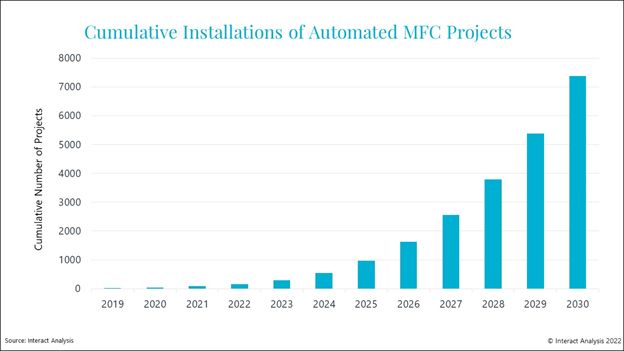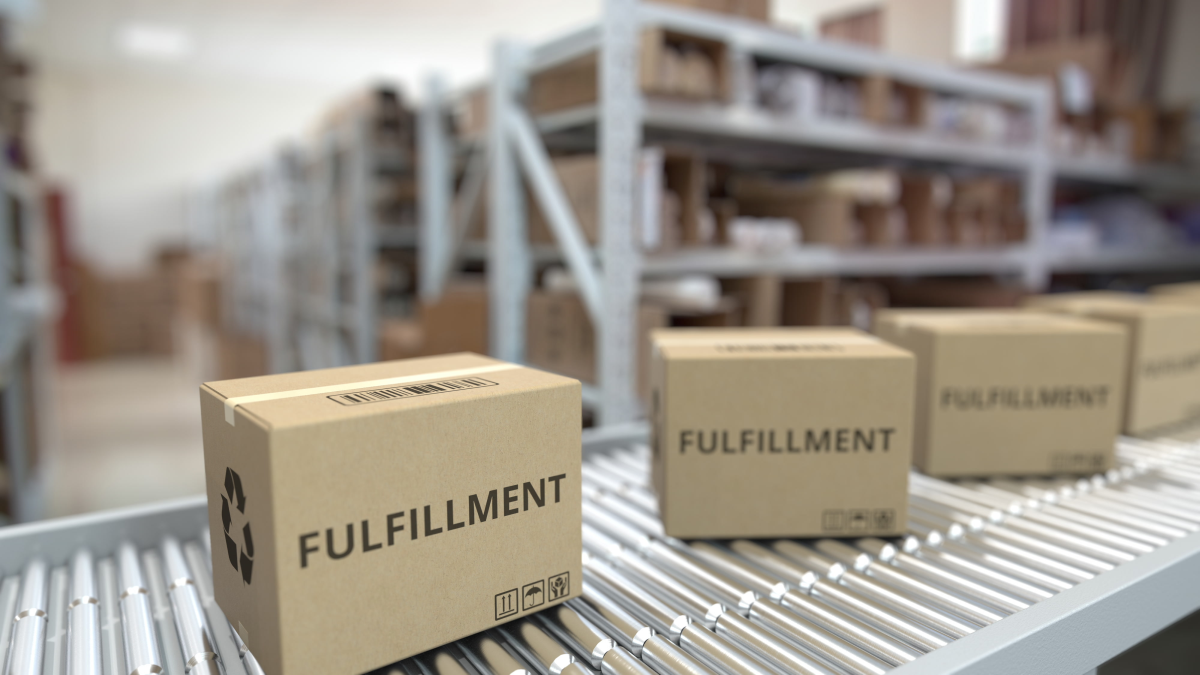If you follow ecommerce-related startups, you can’t deny that micro fulfillment is hot right now. As depicted by this graphic from Interact Analysis, it’s only going to get hotter. (source)
 Of course, Amazon is leading the way in the development of MFC’s as they have opened 50 such facilities in NYC alone. All major urban markets are seeing the development of the smaller, micro fulfillment center, which cost a lot less to develop than the legacy model of large fulfillment centers.
Of course, Amazon is leading the way in the development of MFC’s as they have opened 50 such facilities in NYC alone. All major urban markets are seeing the development of the smaller, micro fulfillment center, which cost a lot less to develop than the legacy model of large fulfillment centers.
While most new MFC’s are supporting grocery fulfillment, we are also seeing many new alternate-use MFC’s, like Fabric’s new facility in Dallas, with a focus on consumer goods and general merchandise fulfillment. Fabric is also representative of the investment dollars flowing into Micro Fulfillment. Investing in last mile delivery companies is old news as it has been slow for these start-ups to drive profitability. Ironically, MFC’s growth could be the salvation for money-losing last mile delivery companies as their operating models require numerous deliveries in urban markets, to drive the scale needed to be profitable.
So, What’s Different About a Micro Fulfillment Center?
- They are significantly smaller than the legacy, ecommerce order fulfillment centers and cost less to develop.
- They are in urban centers.
- They tend to focus on smaller items like general merchandise for fulfillment.
- Minimum item order requirements are necessary to drive manageable delivery charges.
- Due to their limited capacity, centers must be supplied often, and replenishment sometimes must occur during over-night hours to avoid urban traffic.
- MFC’s can be highly automated, driving down labor expense.
- They promote Q-commerce which drives the need for ultra-fast, on-demand, last mile delivery solutions.
- While they tend to fulfill for multiple brands, MFC’s have fewer fulfillment clients than legacy fulfillment centers.
And What Are the Barriers to Success?
- AMAZON
- Investors must be in it for the long-haul as it’s not clear how long it will take for the MFC model to become profitable.
- Urban municipalities are not happy about development that drives more on-demand deliveries on their already crowded city streets.
- Competition is ramping up quickly, which will make it harder to reach profitability.
- Product selection is limited so the merchants may see a higher percentage of abandoned, online shopping carts.
- Urban real estate is pricy and scarce.
Impact on the Legacy, Ecommerce, Order Fulfillment 3PL
The old fulfillment models will survive just fine if ecommerce continues to grow at a 10-15% clip. Also, consumers will still turn to traditional ecommerce fulfillment models, including marketplaces, that offer a wide selection of products and can offer free, 2-day delivery.
Collectively, Is the Q-Commerce, Micro Fulfillment, and Last Mile Delivery Trifecta a Winner?
By themselves, Q-Commerce, Micro Fulfillment, and Last Mile Delivery will continue their drawn out quest for profitability. Together, all three will feed off each other and could go down the path to profitability much faster, than on their own.


